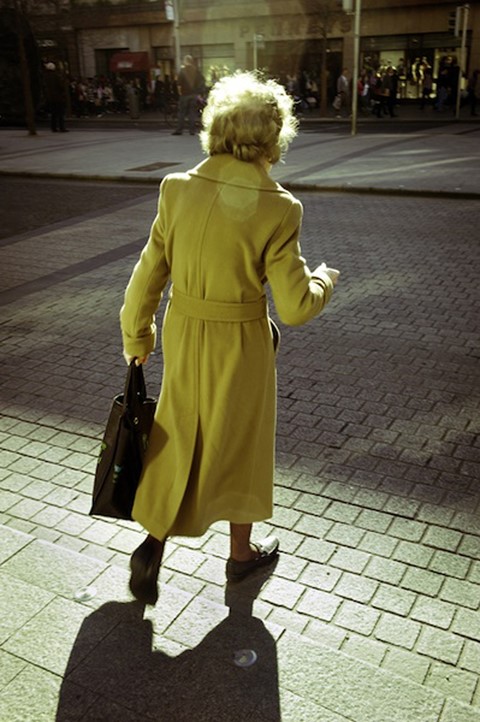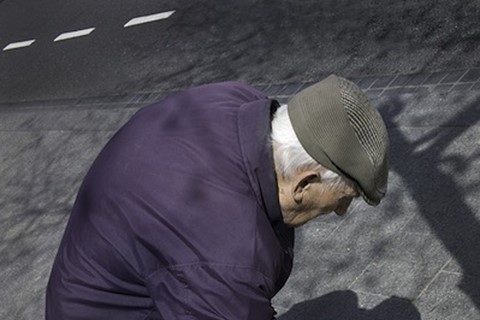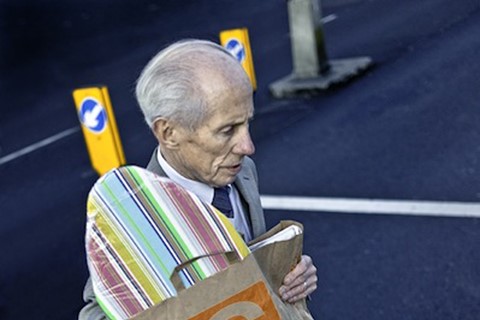As Eamonn Doyle's photographs are showcased at Paris Photo this week, AnOther considers his work within the great tradition of street photography
Eamonn Doyle’s debut photobook, ‘i’, was published earlier this year, garnering the accolade of “the best street photo book in a decade” from Martin Parr. High praise indeed, and now a selection of the photographs will be showcased at Paris Photo this week.
Doyle’s idiosyncratic portraits of old inhabitants of his native Dublin are a bold new presentation of a familiar genre. At once candid and composed, they capture the colour and frailty of the human condition in an urban environment. His timeless characters simultaneously provide a meditation on the act of photography itself, of fleeting encounters captured, a transient moment immortalised. Now appropriated by the fashion industry, new and inventive forays into the genre are a rare treat. Here, AnOther talks to Eamonn Doyle to discover how he has created just that alongside a rainbow selection of our favourites.
On Dublin...
“Returning to photography in recent years, I set out to work with what I knew. As a long-term resident of Parnell Street in Dublin’s north inner city, there was a wealth of photographic subjects on my doorstep. It’s an old working class area, now quite multicultural. At times it’s edgy and raw and vibrant, while at others it seems half-sunk in a weary pathos.”
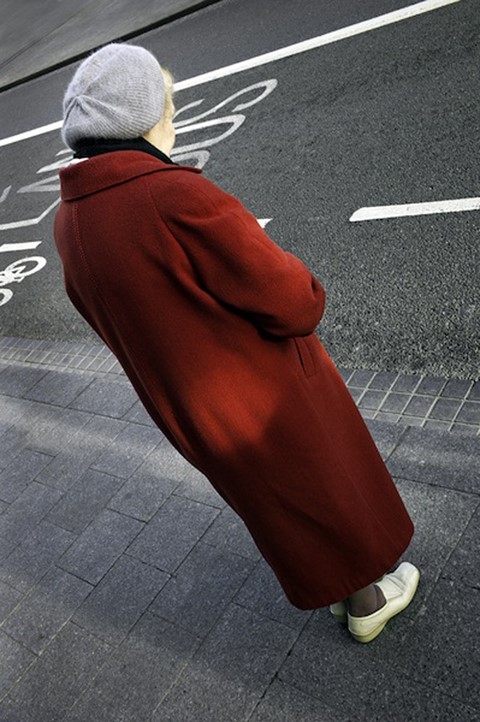
On street photography...
“I wouldn’t call myself a street photographer, but I do photograph on the street a lot. It’s a very broad term, but I tend to stick to a quite literal definition, so for me it is photography on the street, unmanipulated and completely unposed. The main attraction of the street for me is that’s where most of the people are. The vast majority of people we observe or experience throughout our lives are usually in these public spaces. So I’m interested in these fleeting urban encounters, however brief they may be.”
"I wouldn’t call myself a street photographer...for me it is photography on the street, unmanipulated and completely unposed"
On taking photographs...
“There are certain decisions that are made initially: what lens, film and camera to use, and what direction I will start walking in. But beyond that, it’s exciting to give yourself over to the flow of the street completely and see where it takes you. I love a lot of conceptual and documentary photography, but I think it suits me more to go out into the world without any agenda as such and see what is thrown up. Regardless of what you encounter on the street, what you choose to zone in on or react to, it will always be personal and reflect whatever’s going on inside, consciously or subconsciously. They are all shot at close range, but respectfully, perhaps even reverently. The pictures show only fragments of possible narratives, but for me, every life has weight and drama, even if its meaning is ultimately elusive. I started to look at people in a much more abstract and graphic way.”
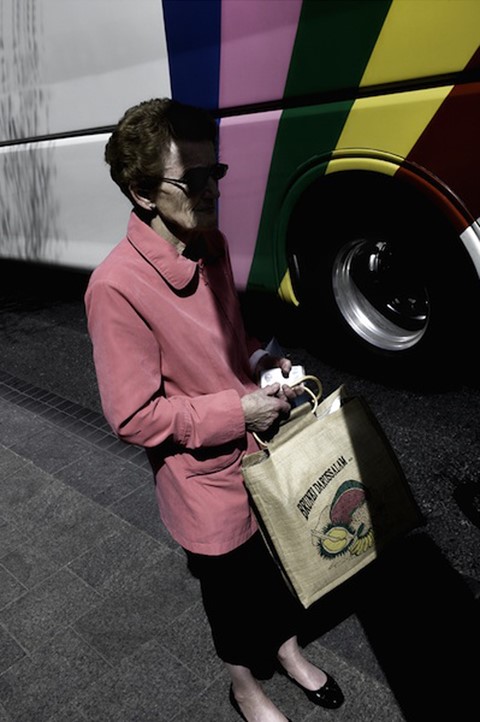
On the famous street photographers...
“My long list of favourite street photographers would include Daidõ Moriyama, Martin Parr, Paul Graham, Robert Frank, Garry Winogrand, Henri Cartier Bresson and William Klein. I think they all provide inspiration as opposed to specific lessons. I think Garry Winogrand’s quote sums it up best: “I don’t have anything to say in any picture. My only interest in photography is to see what something looks like as a photograph. I have no preconceptions.”
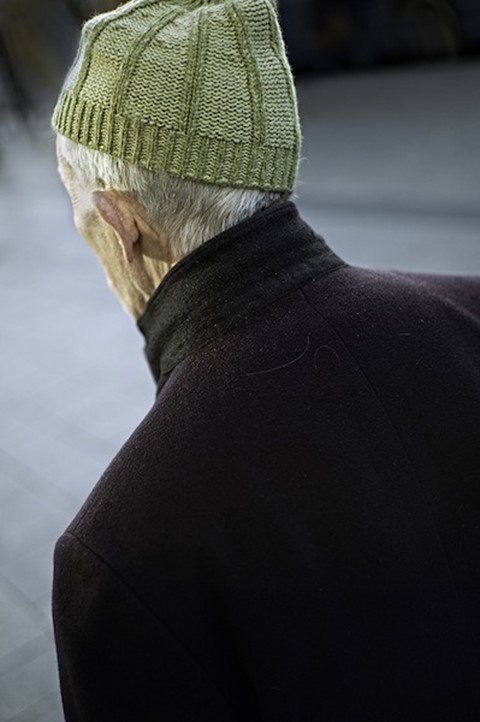
On the evolution of street photography...
“I guess the big revolution is the shift from analogue to digital, from camera phones to Google Street View and the overwhelming amount of images that are created every minute of the day. The analogue/digital debate was something I originally immersed myself in but now I have actively disengaged myself from it as a photographer. I think there are some interesting things to be said and work to be created around the whole subject, but for me, I can just about manage to deal with myself and hold my thoughts together without thinking about what the rest of the world is photographing. It’s a fascinating subject, but a little bit daunting for me to take in.”

On photographing old people...
“The photographs from the ‘i’ series were all of elderly people, but it’s not something that I would generally photograph more than any other subject from day to day. That particular set of photographs which make up the book began to evolve naturally as I started to feel my way back into photography after a long break. Around the same time I was re-discovering Beckett and reading some of his novels for the first time, specifically the Trilogy comprising the novels Malloy, Malone Dies and The Unamenable. I’m fascinated by Beckett’s minimalism and reductivsm, especially in how he drew out his characters and locations. I started to be drawn towards these elderly solitary ‘Beckettian’ characters, people I’ve seen passing me on the street every day, they seemed to be treading the same ground day in, day out. ”

On his unconventional portrait style...
“I was trying to strip away as much of the context, history and general noise that’s difficult to avoid in street photography. So I shot from above and tried to flatten the figures into the pavements and roads, and usually tried to avoid showing the face. They seemed more engaging to me because of their unknowability. It could be argued that revealing so few faces results in a ‘turning away’ from the people in these photographs. My intention is quite the opposite. Portrait photography usually finds its expressiveness in faces; I want the viewer to look elsewhere, to find cues other than the obvious ones, to look harder and, if needs be, to infer the missing faces.”
"I want the viewer to look elsewhere, to find cues other than the obvious ones, to look harder and, if needs be, to infer the missing faces"
On the title of ‘i’...
“The title of the book, ‘i’, is a direct reference (or mis-reference) to the title of Beckett's play, ‘Not I’. But, not wanting to assume any comparability between my work and his, I further negated his negative, the double negative leaving me with a lone ‘i’. Lower case, it seemed to suggest anti-heroism, even stoicism. Italicised, it suggested further possibilities: the shadow cast by a regular, vertical ‘i’; a diminutive self falling, or moving forward to counteract a falling; or a lone figure leaning into a stiff wind on a Dublin street.”
Eamonnn Doyle is showing at Paris Photo with the Michael Hoppen Gallery until November 16, 2014.
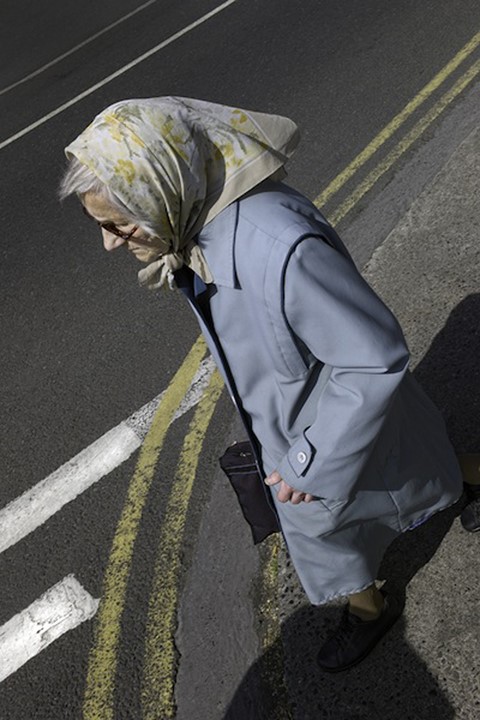
Words by Harriet Baker
